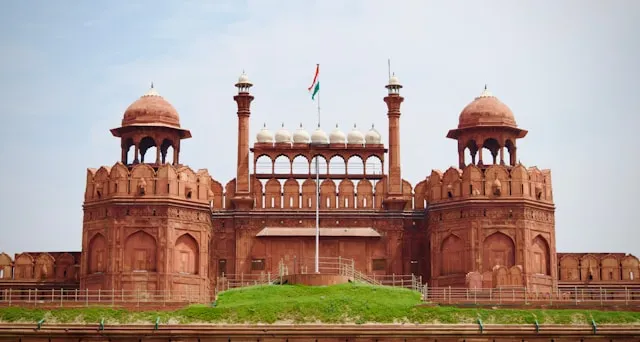European Travel Guide
European
About European Travel Guide
Destination Overview in Europe
Europe, a continent rich in history, culture, and natural beauty, offers an unparalleled travel experience. From the romantic canals of Venice to the majestic castles of Germany, the bustling cities of London and Paris to the serene landscapes of the Swiss Alps, Europe caters to every traveler’s dream. Known for its diverse cultures, languages, and cuisines, Europe seamlessly blends ancient traditions with modern innovations. Whether you seek art, history, adventure, or relaxation, Europe’s vast array of countries and attractions make it a top destination for international travelers.
Top Attractions & Places to Visit in Europe
Iconic Cities & Landmarks:
Paris (Eiffel Tower, Louvre Museum)
Rome (Colosseum, Vatican City)
London (Buckingham Palace, Tower of London)
Amsterdam (Canals, Anne Frank House)
Barcelona (Sagrada Familia, Park Güell)
Cultural & Historical Sites:
Athens (Acropolis, Parthenon)
Prague (Charles Bridge, Old Town Square)
Vienna (Schönbrunn Palace, Opera House)
Florence (Uffizi Gallery, Duomo)
Natural Wonders & Scenic Spots:
Swiss Alps (skiing, hiking)
Norwegian Fjords
Amalfi Coast, Italy
Plitvice Lakes National Park, Croatia
Museums & Galleries:
The British Museum, London
Rijksmuseum, Amsterdam
Musée d’Orsay, Paris
Best Time to Visit Europe
The best time to visit Europe depends on the region and interests:
Spring (April to June): Pleasant weather and blooming landscapes.
Summer (July to August): Peak tourist season with festivals and beach activities.
Autumn (September to October): Mild weather and fewer crowds, perfect for sightseeing.
Winter (December to February): Ideal for skiing and Christmas markets.
How to Reach Europe
Air:
Europe is served by numerous international airports like London Heathrow, Charles de Gaulle (Paris), Frankfurt, and Amsterdam Schiphol, with extensive connectivity worldwide.
Rail:
Europe’s efficient rail network (Eurostar, Thalys, TGV) connects major cities and countries.
Road:
Well-developed highways and rental cars offer flexible travel across countries.
Accessibility for Differently-Abled Travelers in Europe
Most European cities provide excellent accessibility with wheelchair-friendly public transport, ramps, and facilities at major attractions. Many hotels and museums are equipped to accommodate differently-abled visitors comfortably.
Things to Do & Experiences in Europe
Explore the historic streets of Rome and visit the Vatican.
Take a romantic gondola ride in Venice.
Attend world-class operas and ballets in Vienna.
Discover art masterpieces in Paris museums.
Enjoy outdoor adventures in the Swiss Alps and Norwegian fjords.
Experience festive Christmas markets in Germany and Austria.
Accommodation Options in Europe
Europe offers a wide range of accommodations from luxury hotels and boutique stays to budget hostels and charming countryside inns. Popular areas include city centers, historic districts, and scenic countryside locales.
Local Cuisine & Dining in Europe
European cuisine is diverse and region-specific:
Italian pasta and pizzas
French pastries and fine dining
Spanish tapas and paella
German sausages and beer
Mediterranean seafood specialties
Travel Tips & Safety in Europe
Carry travel adapters for European outlets.
Be aware of pickpockets in tourist areas.
Use public transport passes for cost savings.
Respect local customs and dress codes, especially in religious sites.
Emergency contacts: 112 (European-wide emergency number).
Weather Details & Packing Suggestions in Europe
Pack layers to adjust to varying climates.
Include waterproof jackets for unpredictable weather.
Comfortable walking shoes are essential.
Currency Exchange & Banking Facilities in Europe
The Euro (€) is used in most European countries; however, some use local currencies (e.g., GBP in the UK, Swiss Franc in Switzerland). ATMs and currency exchange services are widely available. Credit and debit cards are accepted almost everywhere.
Connectivity & SIM Card Info in Europe
Local SIM cards are affordable and offer good coverage across most countries. EU roaming allows usage of SIM cards across member countries without extra charges. Free WiFi is common in hotels, cafes, and public areas.
Itinerary Suggestions in Europe
7-Days:
Paris, London, and Amsterdam – Explore iconic landmarks, museums, and canals.
14-Days:
Add Rome, Venice, and Swiss Alps – Experience history, culture, and nature.
21-Days:
Include Barcelona, Prague, Vienna, and Norwegian fjords – A comprehensive European adventure.
Nearby Destinations to Explore from Major European Cities
From Paris: Versailles, Normandy Beaches
From Rome: Pompeii, Amalfi Coast
From London: Stonehenge, Bath
From Amsterdam: Zaanse Schans, Keukenhof Gardens
Shopping & Souvenirs in Europe
Popular shopping includes designer brands in Milan and Paris, local handicrafts in Prague, Swiss watches, and Belgian chocolates. Souvenirs: lace, ceramics, perfumes, and gourmet foods.
Cultural & Historical Background of Europe
Europe is the cradle of Western civilization with rich history spanning Roman Empire, Renaissance, Industrial Revolution, and modern European Union. It’s home to UNESCO World Heritage sites, historic cities, and diverse cultural traditions.
Best Transport Options in Europe
Trains (high-speed and regional), buses, and low-cost airlines make intra-European travel convenient and affordable. City metros and trams offer efficient urban transport.
Nearest Railway Stations or Airports in Europe
Major international airports and railway hubs in cities like London, Paris, Frankfurt, and Amsterdam provide easy access to the continent.
FAQs About Europe
Is Europe safe for solo travelers?
Yes, with standard precautions.
What is the best time to visit Europe?
Spring and autumn for pleasant weather and fewer crowds.
Do I need a visa to visit Europe?
Visa requirements vary by nationality and Schengen Agreement rules.
Which languages are spoken?
Multiple languages including English, French, German, Italian, Spanish, among others.
Is the food safe for tourists?
Yes, European food safety standards are high.
How can I get around?
Use trains, metros, buses, and flights for efficient travel.
Are ATMs and currency exchange facilities available?
Widely available throughout Europe.
What clothing should I pack?
Layered clothing suitable for changing weather.
Can I use my mobile phone?
Yes, EU roaming agreements make travel easy.
Are there restrictions on photography?
Generally allowed; some museums and religious sites may restrict photography.
Sustainability & Responsible Tourism in Europe
Europe emphasizes sustainable tourism with eco-friendly accommodations, green transport options like trains and bikes, and conservation of natural and cultural heritage. Travelers are encouraged to reduce waste, support local businesses, and respect local customs and environments.
Need a European Travel Guide Customized Itinerary?
Let us create your perfect European Travel Guide journey

Gallery

Weather
Location Map
European
Latest Blog Posts
Latest News: European Travel Guide 2025 | Best Countries, Cities & Tips
What Our Travelers Say
Real experiences from our valued customers
"Bali was an absolute dream! The temples, beaches, and serene atmosphere gave us the ultimate break. Everything from the flights to the activities was well taken care of!"
Anjali Verma ( Jaipur, India)
"Had a profound spiritual experience in Puri Jagannath. The arrangements were perfect, making the pilgrimage peaceful."
Anna Peterson (Stockholm, Sweden)
"A great trip to Dwarka. The serenity and spiritual vibes were unmatched. The whole experience was seamlessly organized."
Sumita Singh (Delhi, India)
"The Kailash Yatra is something I’ll never forget. The holy mountain radiated peace, and the journey was spiritually fulfilling. The entire process was seamless and well-handled by the team."
Neelam Agarwal (Mumbai, India)
"Our pilgrimage to the Sabarimala temple was filled with peace and grace. I couldn’t have asked for a better journey."
Amit Choudhury (Mumbai, India)
"The Rishikesh Ganga Aarti was magical. The team ensured the trip was perfectly planned, making it an unforgettable experience."






